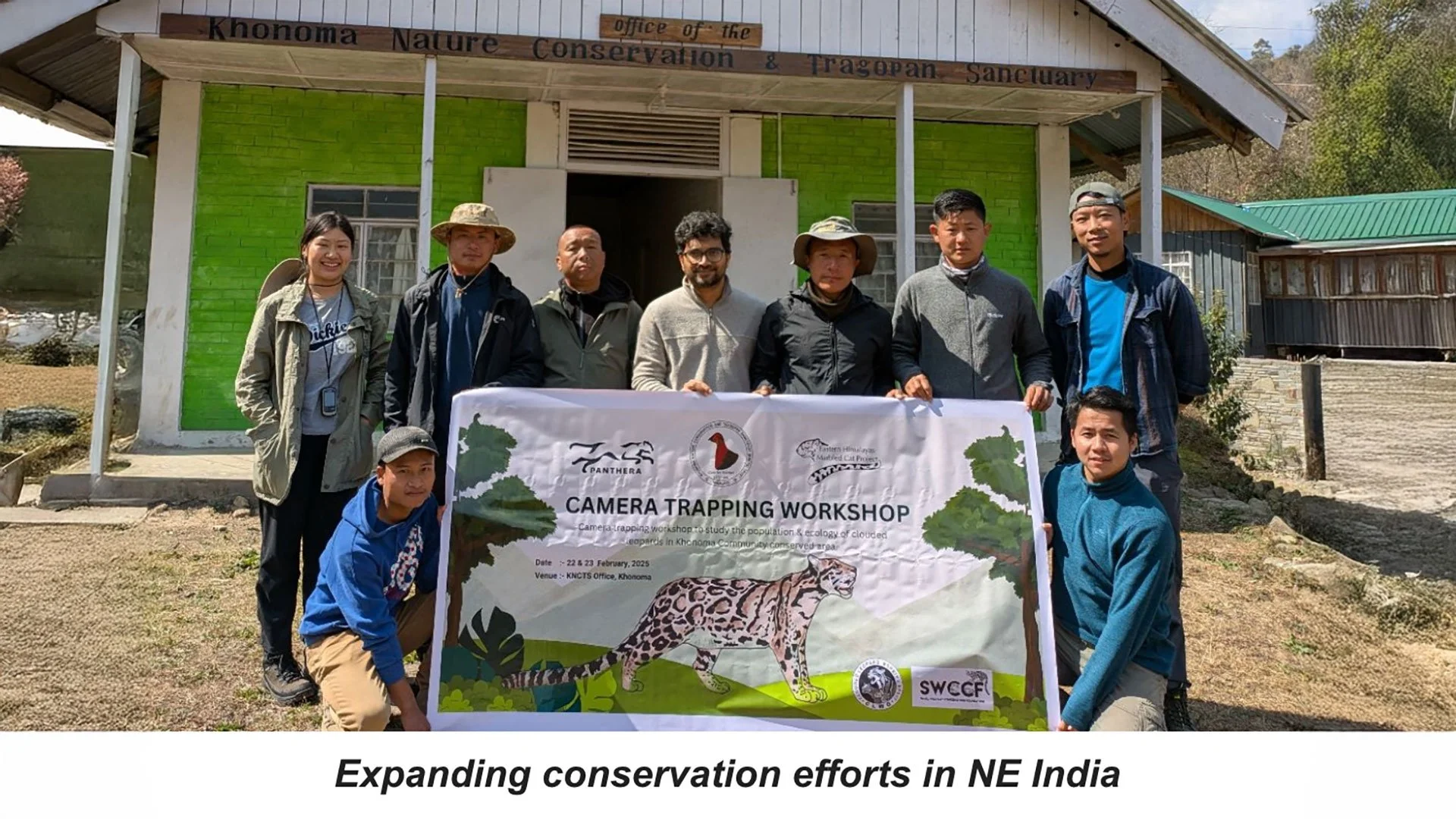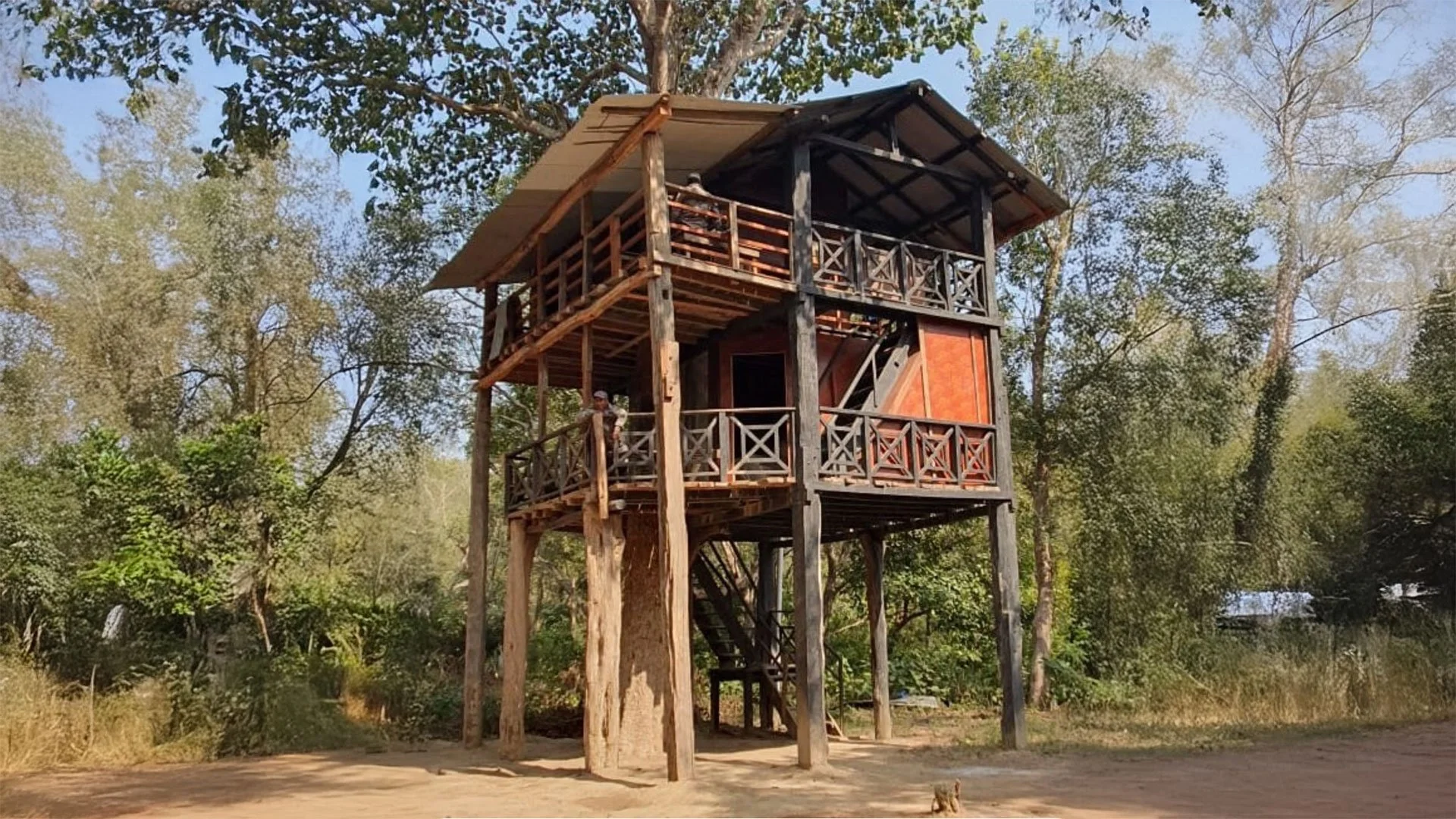SWCCF News 2025 04
Manul: Described in 1776, recognized within a decade
Jim Sanderson
In the March eNewsletter, I highlighted the importance of including an illustration when describing a new species of small cat. With respect to the Black-footed cat first described by William John Burchell in 1824, Burchell failed to include an illustration of the new species most likely because he never saw a living individual. However, Burchell described the new species from 14 skins he examined but his decision not to include an illustration of even one of the skins had long-term negative consequences. It was not until 1900 that the first illustration of the Black-footed cat appeared in William Lutley Sclater’s book The Fauna of South Africa. Following the illustration, leading naturalists included in their accounts the Black-footed cat as a distinct species. Such was not the case with the Manul that was accepted within ten years of the first description.
In 1776, the great naturalist and explorer, Peter Simon Pallas, provided the first description of the Manul on page 692 of his book: Reise aus Sibirien zurük an die Volga im 1773sten Jahr in just two paragraphs. In case you are curious, I've translated the original German:
2. FELIS: Manul. Tartar and Monglian Manul.: Stepnaya koshka [in Russian].
Size of a fox; head a little larger, limbs sturdy, whence the appearance of a Lynx. Color of a Lynx over its whole body, that is to say, rather tawny [fulvescens], shaded with white and with sparse dark hairs, pale underneath. Head with black dots on top, and with two oblique lines on either side [running] parallel from the eye along the cheeks. Feet most untidily striped with dark, wandering blots. No spots at all on the body. Tail a little longer than on a Cat, and thickened everywhere with dense hairs, cylindrical, black at its extremity (apex) and with rings six times around, of which the three nearer the extremity [are] closely pressed [&] somewhat connected, the remainder gradually more untidy and separate.
Numerous in craggy, sunny areas of the whole of uninhabited Tartary and Mongolia, subsisting on a variety of small animals.
Though a leading naturalist of his time, how could it be that Pallas' terse description was widely accepted before the turn of the century? I was certain of the answer: There must be an original first illustration that quickly followed Pallas' first description. The question was, where is this first illustration? None of my colleagues knew of its existence. I thus began a search for the missing article and illustration. Four years later, I found what I was searching for.
I discovered an oddly shaped book entitled A Naturalist in Russia, Letters from Peter Simon Pallas to Thomas Pennant, edited by Carol Urness, and published by The University of Minnesota Press, 1967. My curiosity once again got the best of me and I was diverted to learn more about the exchange between Pennant and Pallas. Much to my surprise, page 59 had an illustration of the Manul attributed to Pallas. On page 181, a Key to Illustrations was provided. The key showed the illustration appeared in ACTA published by the Russian Academy, but the year was missing. My investigation was finally rewarded when I opened the last of an incomplete set of just 12 volumes of the ACTA journal housed in the Beinecke Rare Book and Manuscript Library, Yale University. Published in 1784, I experienced euphoria when I saw the title page. Pallas' had written a 15 page article in Latin thoroughly describing the Manul. The cover page showed Tab. VII – an illustration – located at the back of the volume. I held my breath. After all these hundreds of years, could the illustration still be in the back of the volume? Yes! Too large for a single page, the illustration was a fold-out. There, on the table before me, was the first illustration of the Manul illustrated by the hand of Peter Simon Pallas. Most likely, this illustration had not been viewed for more than two centuries. The above picture is a rectangular section of the original illustration. There is no mistaking a Manul.
Ganga Ram Regmi, Nepal, Clouded Leopard Working Group
In eastern Nepal, many farmers traditionally relied on conventional beekeeping methods with limited productivity. To enhance their livelihoods and promote forest habitat conservation, communities residing near Clouded leopard habitats were provided with beekeeping training, improved beehives, honey bottles and a sealing machine to facilitate proper packaging and marketing of their honey. Two years ago, the Clouded Leopard Working Group (CLWG) established Clouded Leopard Conservation Honey, a community-led enterprise promoting sustainable and profitable honey production. Today, 300 households in Salakpur, Ilam have successfully engaged in beekeeping, contributing to their economic stability and environmental sustainability which has reduced not only the dependency of locals on forest resources and hunting, but also the retaliatory killings of predators like Clouded leopard, Asiatic golden cat, Marbled cat, and other wildlife.
The latest honey production data indicates a 40% increase over the previous year, showing greater interest from local farmers toward beekeeping. The honey produced in this region is in high demand due to its organic nature and purity. Encouraged by the success of this initiative, CLWG plans to expand the program to nearby villages. Beyond its economic advantages, beekeeping has played a significant role in supporting the protection of all wildlife and their habitats. Bees collect nectar from the forests where the Clouded leopard resides, making forest conservation essential for both species. This ensures the mutual benefits of biodiversity conservation and sustainable livelihoods.
Our efforts highlight the difference between conservation and research. The focus of research is on a particular species and results are limited to a species in a particular place. Our efforts focus on reducing threats to wildlife and habitats by working with people to improve their living standard and their daily lives. Because the benefits of honey production to people depend on healthy forests, and healthy forests depend on all wildlife, people change their behavior to protect the forest and its inhabitants.
Our projects address the root causes of wildlife issues and habitat loss with practical, pragmatic, sustainable and scalable solutions that permanently change people’s attitudes for the better. That’s real conservation. CLWG thanks all our financial partners for supporting our efforts to save the small wild cats that enrich our lives.
[JGS: Bees, beekeeping, and sustainable honey production require caring for local forests and the wildlife that lives there. Additionally, corporations are paying rural cooperatives cash for carbon offsets. Can the above model, also employed in Mexico by Mariam Weston, Ocelot Working Group leader, be used everywhere we work?]
Clouded Leopard Working Group
Giri Malla, NE India, Eastern Himalayan Marbled Cat Project
Our team in Meghalaya, Northeast India has grown, and we have expanded our trail camera survey efforts across 20 community forests. While we haven’t yet recorded Clouded leopards or Marbled cats, Asiatic golden cats appear abundant throughout the landscape, with different morphs using the same trails daily.
One of the clan villages, which has a vast community forest spanning around 1,000 acres, has contacted our project for habitat restoration. This forest has a history of logging for the coal industry, but the local community now recognizes the importance of preserving it, especially as their water sources have become scarce. Last week, they approached our team, expressing willingness to restore the habitat using native trees. Since Clouded leopards inhabit this forest, improving the habitat is a promising step for conservation. To support this initiative, we are partnering with a local wine company to help communities raise native fruiting trees and purchase the harvested fruits.
Our team is now working across these villages to reduce the conflict and raise awareness. We have distributed seven hen houses to affected households. We plan to reach more villages in the coming months to mitigate such conflicts. Most of the disputes are with Asiatic golden cats and Leopard cats.
The Wildlife Board of Meghalaya has granted permission to establish a rescue center in one of the Biodiversity Monitoring Committee villages. Just last month, we received reports of small wildcats being caught by villagers, and more recently, an Asiatic golden cat was trapped in a coal mining area. Given these incidents, I strongly believe a rescue center supported by the local communities is essential. None exist in this region.
In Nagaland, we have installed the trail cameras SWCCF helped purchase a few weeks ago. I have trained the local youth, and now they are monitoring the small wild cats. We haven't checked the images yet; the locations are very remote. Khonoma Village Council permitted my project and extended their support. And there is more good news. Next week, Community Conversation Area - Network- Nagaland (CCA) has expressed interest in my project. Around 20 CCA (spanning across Nagaland) will gather in Khonoma village next month, where hunting is prevalent. Our team in Nagaland will introduce them to small wildcat monitoring protocols, and we are officially launching small wildcat monitoring committees to address local threats, hunting and mitigation measures.
Eastern Himalayan Marbled Cat Project (in progress)
Treehouses: Bridging local livelihoods and conservation of Rusty-spotted cat
Ramjan Chaudhary, Nepal, Rusty-Spotted Cat Working Group
Just as we have written many times before, community, conservation and livelihood are deeply interconnected. In the Bindrapuri Community Forest and Khata Bio-corridor area of Bardiya, southwestern Nepal, a sustainable initiative is helping both people and wildlife. As part of the alternative livelihood initiative, three treehouses were constructed and renovated, providing eco-tourism opportunities that support local communities while protecting the habitat of the Rusty-spotted cat.
Through this initiative, 23 families have gained a sustainable source of income. According to Ramjan Chaudhary, a local resident and also a member of the Rusty-spotted Cat Working Group, each treehouse generates an average annual income of 300,000 Nepalese Rupees. One of the local women, Kakari Tharu from Bardiya, shared that the treehouse has been a main source of income for her family, which relies almost entirely on its earnings for their livelihood. More importantly, communities have reduced their dependence on forest resources by 70%, choosing sustainable tourism over the exploitation of resources from the Rusty-spotted cat’s habitat.
Under our leadership, we created tree nurseries and are replanting the forest with native trees. I have observed a marked change in local people’s attitudes and behavior toward the forest. Instead of consuming the forest, they are now caring for the forest. The realization has come that an intact forest and the wildlife it holds is far more valuable alive than dead.
Tourists visit the area, stay in the treehouses and pay for their accommodation. This initiative allows visitors to enjoy their stay while ensuring nature remains undisturbed.
Rusty-Spotted Cat Working Group
Copyright © 2025 Small Wild Cat Conservation Foundation, All rights reserved.
Newsletter April 2025
Small Wild Cat Conservation Foundation’s address is:
Wildlife Conservation Network, 209 Mississippi Street, San Francisco, CA 94107-2528




